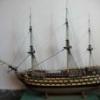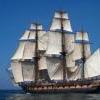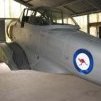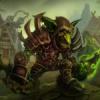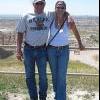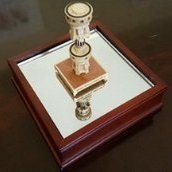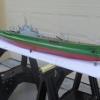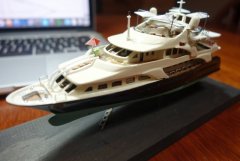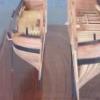Supplies of the Ship Modeler's Handbook are running out. Get your copy NOW before they are gone! Click on photo to order.
×
-
Posts
4,873 -
Joined
-
Last visited
Reputation Activity
-
 gjdale got a reaction from Kusawa2000 in Ancre Publications
gjdale got a reaction from Kusawa2000 in Ancre Publications
Order directly from their website - very reputable and reliable company, and no problems with international postage.
-
 gjdale got a reaction from -Dallen in Ancre Publications
gjdale got a reaction from -Dallen in Ancre Publications
Order directly from their website - very reputable and reliable company, and no problems with international postage.
-
 gjdale got a reaction from mtaylor in Ancre Publications
gjdale got a reaction from mtaylor in Ancre Publications
Order directly from their website - very reputable and reliable company, and no problems with international postage.
-
 gjdale got a reaction from Canute in Ancre Publications
gjdale got a reaction from Canute in Ancre Publications
Order directly from their website - very reputable and reliable company, and no problems with international postage.
-
 gjdale got a reaction from PeteB in Ancre Publications
gjdale got a reaction from PeteB in Ancre Publications
Order directly from their website - very reputable and reliable company, and no problems with international postage.
-
 gjdale got a reaction from Eddie in 42ft Longboat Armed For War 1834 by BlockPlane - FINISHED - Scale 1:36
gjdale got a reaction from Eddie in 42ft Longboat Armed For War 1834 by BlockPlane - FINISHED - Scale 1:36
Liver of Sulphur is great for blackening Copper, but it will not work on Brass.
Another option for blackening Brass is Jax Pewter Black, which despite the name, works very well on Brass.
-
 gjdale reacted to Jeronimo in Chebece 1750 by Jeronimo - FINISHED
gjdale reacted to Jeronimo in Chebece 1750 by Jeronimo - FINISHED
Hello friends.
Manufacture and construction of the first frames of a total of eighty-five.
Thickness 2x3 mm
Karl
Part 2
-
 gjdale reacted to Jeronimo in Chebece 1750 by Jeronimo - FINISHED
gjdale reacted to Jeronimo in Chebece 1750 by Jeronimo - FINISHED
Hi friends.
Construction of the new model " CHEBECE 1750 "
Karl
Part 1
-
 gjdale got a reaction from hamilton in 1949 Chris-Craft 19' Racing Runabout by gjdale - FINISHED -Dumas - 1:8 Scale - RADIO
gjdale got a reaction from hamilton in 1949 Chris-Craft 19' Racing Runabout by gjdale - FINISHED -Dumas - 1:8 Scale - RADIO
Thanks Bug and Carl, and also to those who hit the "like" button.
To complete the Horn Ring, the spokes were silver soldered in place and the whole thing given an initial clean-up. In this picture, the square cross-section of the rim is evident, as is that of the spokes.
All components of the wheel assembly are now ready for final clean-up and painting / plating.
The CutwaterI had previously made a mould to assist in making the cutwater but it turned out to be too small, so another mould was made. In making this mould, I first sprayed the bow with a spray-on / peel-off automotive plastic paint. This gave a nice smooth surface for the mould while ensuring plaster did not get stuck to the surface of the boat. This worked well and the peel-off paint behaved exactly as the manufacture claimed. I also embedded a couple of dowels in the plaster, with the ends passed through and epoxied into a scrap of 3/4” plywood. This provided a useful “handle” to hold the mould in a vice.
Paper patterns for the two halves of the cutwater were printed on sticky label paper and attached to a piece of 0.015” thick brass sheet. The brass sheet was itself attached to some thin plywood scrap with double-sided tape and the pieces were rough-cut on the scroll saw and then finish-shaped on the disc sander and spindle sander.
Following the lead of others in the RC Groups Forum, I embedded a number of 6-32 threaded inserts into the mould, and made some hold-downs from some scrap aluminium flat bar. At this point, I took a slightly different approach to the task of soldering the cutwater halves. I had read of others having problems with having sufficient solder on the internal side of the cutwater, and of course I’d read their solutions as well. I did a little further reading/research on soldering and decided that it might be possible to use the properties of the solder itself to solve this problem. The key point I noted was that solder will always flow towards the heat source. To make use of this, I placed one of the cutwater halves on the mould and then wedged a ribbon of solder “wire” partly under this half before placing the second cutwater half. This meant that the two halves of the cutwater were held in place with the ribbon of solder firmly touching each half. I then painted some flux along the outside of the join, and applied heat from my small butane torch, starting at one end and moving slowly but steadily along as the molten solder wicked through. This worked very well and I should have left well enough alone….. I decided to add a little extra solder in a couple of spots but really only succeeded in adding a few globs of molten solder to the outside faces. Oh well, a little extra clean-up!
In the next shot, you can see the solder on the internal join – prior to clean-up.
And finally, here’s a few beauty shots of the completed cutwater after a little clean-up with files and sandpaper.
I did a quick test-fit on the actual bow of the boat, and it fits neatly. The cutwater is now ready for plating and final fitting.
-
 gjdale got a reaction from Shazmira in 1949 Chris-Craft 19' Racing Runabout by gjdale - FINISHED -Dumas - 1:8 Scale - RADIO
gjdale got a reaction from Shazmira in 1949 Chris-Craft 19' Racing Runabout by gjdale - FINISHED -Dumas - 1:8 Scale - RADIO
Thanks Bug and Carl, and also to those who hit the "like" button.
To complete the Horn Ring, the spokes were silver soldered in place and the whole thing given an initial clean-up. In this picture, the square cross-section of the rim is evident, as is that of the spokes.
All components of the wheel assembly are now ready for final clean-up and painting / plating.
The CutwaterI had previously made a mould to assist in making the cutwater but it turned out to be too small, so another mould was made. In making this mould, I first sprayed the bow with a spray-on / peel-off automotive plastic paint. This gave a nice smooth surface for the mould while ensuring plaster did not get stuck to the surface of the boat. This worked well and the peel-off paint behaved exactly as the manufacture claimed. I also embedded a couple of dowels in the plaster, with the ends passed through and epoxied into a scrap of 3/4” plywood. This provided a useful “handle” to hold the mould in a vice.
Paper patterns for the two halves of the cutwater were printed on sticky label paper and attached to a piece of 0.015” thick brass sheet. The brass sheet was itself attached to some thin plywood scrap with double-sided tape and the pieces were rough-cut on the scroll saw and then finish-shaped on the disc sander and spindle sander.
Following the lead of others in the RC Groups Forum, I embedded a number of 6-32 threaded inserts into the mould, and made some hold-downs from some scrap aluminium flat bar. At this point, I took a slightly different approach to the task of soldering the cutwater halves. I had read of others having problems with having sufficient solder on the internal side of the cutwater, and of course I’d read their solutions as well. I did a little further reading/research on soldering and decided that it might be possible to use the properties of the solder itself to solve this problem. The key point I noted was that solder will always flow towards the heat source. To make use of this, I placed one of the cutwater halves on the mould and then wedged a ribbon of solder “wire” partly under this half before placing the second cutwater half. This meant that the two halves of the cutwater were held in place with the ribbon of solder firmly touching each half. I then painted some flux along the outside of the join, and applied heat from my small butane torch, starting at one end and moving slowly but steadily along as the molten solder wicked through. This worked very well and I should have left well enough alone….. I decided to add a little extra solder in a couple of spots but really only succeeded in adding a few globs of molten solder to the outside faces. Oh well, a little extra clean-up!
In the next shot, you can see the solder on the internal join – prior to clean-up.
And finally, here’s a few beauty shots of the completed cutwater after a little clean-up with files and sandpaper.
I did a quick test-fit on the actual bow of the boat, and it fits neatly. The cutwater is now ready for plating and final fitting.
-
 gjdale got a reaction from Nirvana in Schooner Polotsk 1777 by Mike Y and his daughter - Master Korabel - 1:72
gjdale got a reaction from Nirvana in Schooner Polotsk 1777 by Mike Y and his daughter - Master Korabel - 1:72
Nice progress Daria. Good to see you wearing the proper safety gear too!
-
 gjdale got a reaction from Piet in SS Kaiser Wilhelm der Grosse 1897 by Mirabell61 - FINISHED - scale 1:144 - POF - first German four stacker of the Norddeutscher Lloyd line
gjdale got a reaction from Piet in SS Kaiser Wilhelm der Grosse 1897 by Mirabell61 - FINISHED - scale 1:144 - POF - first German four stacker of the Norddeutscher Lloyd line
Congratulations on reaching another major milestone Nils. She is looking just fantastic.
-
 gjdale got a reaction from mtaylor in SS Kaiser Wilhelm der Grosse 1897 by Mirabell61 - FINISHED - scale 1:144 - POF - first German four stacker of the Norddeutscher Lloyd line
gjdale got a reaction from mtaylor in SS Kaiser Wilhelm der Grosse 1897 by Mirabell61 - FINISHED - scale 1:144 - POF - first German four stacker of the Norddeutscher Lloyd line
Congratulations on reaching another major milestone Nils. She is looking just fantastic.
-
 gjdale got a reaction from Omega1234 in SS Kaiser Wilhelm der Grosse 1897 by Mirabell61 - FINISHED - scale 1:144 - POF - first German four stacker of the Norddeutscher Lloyd line
gjdale got a reaction from Omega1234 in SS Kaiser Wilhelm der Grosse 1897 by Mirabell61 - FINISHED - scale 1:144 - POF - first German four stacker of the Norddeutscher Lloyd line
Congratulations on reaching another major milestone Nils. She is looking just fantastic.
-
 gjdale reacted to Mirabell61 in SS Kaiser Wilhelm der Grosse 1897 by Mirabell61 - FINISHED - scale 1:144 - POF - first German four stacker of the Norddeutscher Lloyd line
gjdale reacted to Mirabell61 in SS Kaiser Wilhelm der Grosse 1897 by Mirabell61 - FINISHED - scale 1:144 - POF - first German four stacker of the Norddeutscher Lloyd line
Update.....
Build log part 52
today is the day where the forward boats deck will be permanently glued on. Between brass frame and deck I use CA and white wood glue between the lower deckhousings and the boatsdeck.
On this part I did not forget to place the connection holding points for the funnel stays. On the lower bridge its a bit tricky to get the convex deck curvature correct and adjusted to the forseen places of the nav light towers, here also used CA, hope its strong enough...
Also today a last chance to have a look into the inside of this liner, as it is now closed for ever after. Like on all my ships I put a short note (description, year of build, etc . ) into the hull before closing the last opening.
Nils
little red tags mark the places for putting the clamps on (whist glueing)
last look at the inside of the hull
below the deck to go on....
the nav light towers are the forward "anchoring points" for the boats deck
forecastle deck
aft deck
deck glued on and clamped down
the boss with the screw is just to curve down the lower bridge wings during glue curing
-
 gjdale reacted to tlevine in HMS Atalanta 1775 by tlevine - FINISHED - 1:48 scale - from TFFM plans
gjdale reacted to tlevine in HMS Atalanta 1775 by tlevine - FINISHED - 1:48 scale - from TFFM plans
I made a companion for the opening in front of the mizzen mast. The walls were made in a laminated fashion using two layers of castello and mica for the glazing. In order to provide some contrast, the roof is pau marfin. The dark line in the aft portion of the hatch is figuring in the wood. Nothing will be glued in place until after the deck has been installed.
I have partially planked the quarter deck in the same fashion as the forecastle deck (a center plank flanked by two rows of decking). These planks taper from fore to aft.
-
 gjdale reacted to mobbsie in 1949 Chris-Craft 19' Racing Runabout by gjdale - FINISHED -Dumas - 1:8 Scale - RADIO
gjdale reacted to mobbsie in 1949 Chris-Craft 19' Racing Runabout by gjdale - FINISHED -Dumas - 1:8 Scale - RADIO
That's some truley great work Grant.
The wheel is going to look fantastic when completed, so hurry up, I wonna see !!!!!!!!!!!!!!!!!!!!!!!!!!!!!!!!
I've never seen a cutwater done like that before, I just love it.
Altogether very well done mate
Be Good
mobbsie
-
 gjdale got a reaction from GuntherMT in 1949 Chris-Craft 19' Racing Runabout by gjdale - FINISHED -Dumas - 1:8 Scale - RADIO
gjdale got a reaction from GuntherMT in 1949 Chris-Craft 19' Racing Runabout by gjdale - FINISHED -Dumas - 1:8 Scale - RADIO
Thanks Bug and Carl, and also to those who hit the "like" button.
To complete the Horn Ring, the spokes were silver soldered in place and the whole thing given an initial clean-up. In this picture, the square cross-section of the rim is evident, as is that of the spokes.
All components of the wheel assembly are now ready for final clean-up and painting / plating.
The CutwaterI had previously made a mould to assist in making the cutwater but it turned out to be too small, so another mould was made. In making this mould, I first sprayed the bow with a spray-on / peel-off automotive plastic paint. This gave a nice smooth surface for the mould while ensuring plaster did not get stuck to the surface of the boat. This worked well and the peel-off paint behaved exactly as the manufacture claimed. I also embedded a couple of dowels in the plaster, with the ends passed through and epoxied into a scrap of 3/4” plywood. This provided a useful “handle” to hold the mould in a vice.
Paper patterns for the two halves of the cutwater were printed on sticky label paper and attached to a piece of 0.015” thick brass sheet. The brass sheet was itself attached to some thin plywood scrap with double-sided tape and the pieces were rough-cut on the scroll saw and then finish-shaped on the disc sander and spindle sander.
Following the lead of others in the RC Groups Forum, I embedded a number of 6-32 threaded inserts into the mould, and made some hold-downs from some scrap aluminium flat bar. At this point, I took a slightly different approach to the task of soldering the cutwater halves. I had read of others having problems with having sufficient solder on the internal side of the cutwater, and of course I’d read their solutions as well. I did a little further reading/research on soldering and decided that it might be possible to use the properties of the solder itself to solve this problem. The key point I noted was that solder will always flow towards the heat source. To make use of this, I placed one of the cutwater halves on the mould and then wedged a ribbon of solder “wire” partly under this half before placing the second cutwater half. This meant that the two halves of the cutwater were held in place with the ribbon of solder firmly touching each half. I then painted some flux along the outside of the join, and applied heat from my small butane torch, starting at one end and moving slowly but steadily along as the molten solder wicked through. This worked very well and I should have left well enough alone….. I decided to add a little extra solder in a couple of spots but really only succeeded in adding a few globs of molten solder to the outside faces. Oh well, a little extra clean-up!
In the next shot, you can see the solder on the internal join – prior to clean-up.
And finally, here’s a few beauty shots of the completed cutwater after a little clean-up with files and sandpaper.
I did a quick test-fit on the actual bow of the boat, and it fits neatly. The cutwater is now ready for plating and final fitting.
-
 gjdale got a reaction from hamilton in 1949 Chris-Craft 19' Racing Runabout by gjdale - FINISHED -Dumas - 1:8 Scale - RADIO
gjdale got a reaction from hamilton in 1949 Chris-Craft 19' Racing Runabout by gjdale - FINISHED -Dumas - 1:8 Scale - RADIO
Thanks again folks for all the kind comments and the "likes" - they really encourage me to keep striving.
A fairly major update today as I've completed manufacturing all the parts for the new steering wheel.
Wheel Building continued - the Hubs
If I thought that the hard part was over …..
The first step was to actually design my hub components. Although Kip had very kindly sent me a copy of his “chook scratchings” from the design process, I needed to make a couple of design changes to suit my slightly different approach (primarily the fact that the steering shaft will thread into the rear hub). I had several exchanges of email with Kip throughout this process and that was a huge help in getting my head around the task. Here is a copy of my own early chook scratchings.
From here, I decided to make up a set of CAD drawings of each component to further understand what I was attempting to do, and also as a useful check on my own measurements and calculations. Needless to say, there were many changes to both this diagram and the CAD drawings as the manufacturing process got underway – “no plan, no matter how good, survives first contact with the enemy!”
Once I had the design principles clearly in my head, the manufacturing process actually went quite smoothly…….for the most part. In fact, it went so well that I forgot to take many progress shots. In the next picture, I am drilling the banjo spoke holes into what will become the banjo spoke hub. This started as a piece of 5/8” brass rod, that was first bored to leave a wall thickness of 1.5 mm. The banjo spoke holes are all 0.5 mm in diameter and I managed to drill all twelve without breaking the drill bit. Ironically, the drill bit broke just as I was removing it from the mill.
The manufacturing process required some thought as to how to hold various pieces on the lathe while they were being turned and shaped and fitted to their final dimensions. After a bit of trial and error, I concluded that several mandrels of various key sizes, both solid and centre-bored, were the most useful thing to use. I found that gluing these temporarily with CA to the stock being machined held the piece securely while being worked. The parts were then separated by the judicious application of heat from the MAPP blow torch. Here is a shot of the various mandrels I used – in some cases a combination of two mandrels were required.
The rear hub was shaped by first cutting a series of steps (staircase effect) and then smoothing with a round file while still on the lathe. The Horn Ring Hub, Trim Piece and Cap piece required a radius on the end. The Radius Cutting attachment for the lathe worked a treat for these parts.
The Horn Ring itself is square in section and this was formed by using a 1/16” square brass tube. After first annealing with the MAPP torch, it was bent around the same wooden buck as used for the wheel rim. The buck was first turned down to the appropriate diameter, and I must confess here to having a couple of goes at this before I was satisfied with the size. As the tube is hollow, it allowed me to insert a piece of 0.8 mm brass rod inside and extending across the join. This really helped when silver-soldering the join closed. The piece was then returned to the rotary table on the mill and 0.85 mm holes were drilled at 120 degree intervals for mounting the spokes.
The spokes for the horn ring are also square in section and the same brass tube was used for this. By inserting a piece of the 0.8mm brass rod through the pre-drilled hole in the horn ring, right through the length of the spoke, and into the horn ring hub, the hole assembly becomes self-aligning.
The horn ring hub itself was probably the most difficult of all of these parts to make and I had three attempts at this before I was finally satisfied.
The Cap Piece, as well as having a radius turned on the end, also had a 1/32” slot cut with a slitting saw to receive the Throttle Lever, which itself was cut and filed from a piece of 1/32” brass flat bar.
The picture below shows all of these parts, starting with the Wheel Rim and a selection of banjo spokes at the rear, the Horn Ring, Horn Ring Hub and Horn Ring Spokes (temporarily mounted and ready for soldering), and then across the front from left to right are the Rear Hub (note the internal threading to receive the steering column), the Banjo Spoke Hub, the Trim Piece, and the Cap Piece, with the Throttle Lever in the foreground.
Putting some of these components together for the camera, here is a of shot of the Horn Ring assembly mounted on the Banjo Spoke Hub, mounted on the Rear Hub, with a temporary Steering Shaft.
And lastly, the same assembly with the stainless-steel sleeve that goes over the steering shaft.
That completes the manufacture of all components for the new steering wheel. The next job will be to solder the Horn Ring assembly together, and then chrome plate the Horn Ring assembly, Cap Piece and Throttle Lever. The other components will be painted an off-white (ivory) colour, and then the whole lot will be finally assembled.
Once that is done, I will return attention to making the cutwater….
-
 gjdale got a reaction from dgbot in 1949 Chris-Craft 19' Racing Runabout by gjdale - FINISHED -Dumas - 1:8 Scale - RADIO
gjdale got a reaction from dgbot in 1949 Chris-Craft 19' Racing Runabout by gjdale - FINISHED -Dumas - 1:8 Scale - RADIO
Thanks Bug and Carl, and also to those who hit the "like" button.
To complete the Horn Ring, the spokes were silver soldered in place and the whole thing given an initial clean-up. In this picture, the square cross-section of the rim is evident, as is that of the spokes.
All components of the wheel assembly are now ready for final clean-up and painting / plating.
The CutwaterI had previously made a mould to assist in making the cutwater but it turned out to be too small, so another mould was made. In making this mould, I first sprayed the bow with a spray-on / peel-off automotive plastic paint. This gave a nice smooth surface for the mould while ensuring plaster did not get stuck to the surface of the boat. This worked well and the peel-off paint behaved exactly as the manufacture claimed. I also embedded a couple of dowels in the plaster, with the ends passed through and epoxied into a scrap of 3/4” plywood. This provided a useful “handle” to hold the mould in a vice.
Paper patterns for the two halves of the cutwater were printed on sticky label paper and attached to a piece of 0.015” thick brass sheet. The brass sheet was itself attached to some thin plywood scrap with double-sided tape and the pieces were rough-cut on the scroll saw and then finish-shaped on the disc sander and spindle sander.
Following the lead of others in the RC Groups Forum, I embedded a number of 6-32 threaded inserts into the mould, and made some hold-downs from some scrap aluminium flat bar. At this point, I took a slightly different approach to the task of soldering the cutwater halves. I had read of others having problems with having sufficient solder on the internal side of the cutwater, and of course I’d read their solutions as well. I did a little further reading/research on soldering and decided that it might be possible to use the properties of the solder itself to solve this problem. The key point I noted was that solder will always flow towards the heat source. To make use of this, I placed one of the cutwater halves on the mould and then wedged a ribbon of solder “wire” partly under this half before placing the second cutwater half. This meant that the two halves of the cutwater were held in place with the ribbon of solder firmly touching each half. I then painted some flux along the outside of the join, and applied heat from my small butane torch, starting at one end and moving slowly but steadily along as the molten solder wicked through. This worked very well and I should have left well enough alone….. I decided to add a little extra solder in a couple of spots but really only succeeded in adding a few globs of molten solder to the outside faces. Oh well, a little extra clean-up!
In the next shot, you can see the solder on the internal join – prior to clean-up.
And finally, here’s a few beauty shots of the completed cutwater after a little clean-up with files and sandpaper.
I did a quick test-fit on the actual bow of the boat, and it fits neatly. The cutwater is now ready for plating and final fitting.
-
 gjdale got a reaction from Blighty in Phantom by Elijah - FINISHED - Model Shipways - 1:96 - New York Pilot Boat
gjdale got a reaction from Blighty in Phantom by Elijah - FINISHED - Model Shipways - 1:96 - New York Pilot Boat
Great work Elijah - well done!
-
 gjdale got a reaction from popeye the sailor in 1949 Chris-Craft 19' Racing Runabout by gjdale - FINISHED -Dumas - 1:8 Scale - RADIO
gjdale got a reaction from popeye the sailor in 1949 Chris-Craft 19' Racing Runabout by gjdale - FINISHED -Dumas - 1:8 Scale - RADIO
Thanks Bug and Carl, and also to those who hit the "like" button.
To complete the Horn Ring, the spokes were silver soldered in place and the whole thing given an initial clean-up. In this picture, the square cross-section of the rim is evident, as is that of the spokes.
All components of the wheel assembly are now ready for final clean-up and painting / plating.
The CutwaterI had previously made a mould to assist in making the cutwater but it turned out to be too small, so another mould was made. In making this mould, I first sprayed the bow with a spray-on / peel-off automotive plastic paint. This gave a nice smooth surface for the mould while ensuring plaster did not get stuck to the surface of the boat. This worked well and the peel-off paint behaved exactly as the manufacture claimed. I also embedded a couple of dowels in the plaster, with the ends passed through and epoxied into a scrap of 3/4” plywood. This provided a useful “handle” to hold the mould in a vice.
Paper patterns for the two halves of the cutwater were printed on sticky label paper and attached to a piece of 0.015” thick brass sheet. The brass sheet was itself attached to some thin plywood scrap with double-sided tape and the pieces were rough-cut on the scroll saw and then finish-shaped on the disc sander and spindle sander.
Following the lead of others in the RC Groups Forum, I embedded a number of 6-32 threaded inserts into the mould, and made some hold-downs from some scrap aluminium flat bar. At this point, I took a slightly different approach to the task of soldering the cutwater halves. I had read of others having problems with having sufficient solder on the internal side of the cutwater, and of course I’d read their solutions as well. I did a little further reading/research on soldering and decided that it might be possible to use the properties of the solder itself to solve this problem. The key point I noted was that solder will always flow towards the heat source. To make use of this, I placed one of the cutwater halves on the mould and then wedged a ribbon of solder “wire” partly under this half before placing the second cutwater half. This meant that the two halves of the cutwater were held in place with the ribbon of solder firmly touching each half. I then painted some flux along the outside of the join, and applied heat from my small butane torch, starting at one end and moving slowly but steadily along as the molten solder wicked through. This worked very well and I should have left well enough alone….. I decided to add a little extra solder in a couple of spots but really only succeeded in adding a few globs of molten solder to the outside faces. Oh well, a little extra clean-up!
In the next shot, you can see the solder on the internal join – prior to clean-up.
And finally, here’s a few beauty shots of the completed cutwater after a little clean-up with files and sandpaper.
I did a quick test-fit on the actual bow of the boat, and it fits neatly. The cutwater is now ready for plating and final fitting.
-
 gjdale got a reaction from mtaylor in 1949 Chris-Craft 19' Racing Runabout by gjdale - FINISHED -Dumas - 1:8 Scale - RADIO
gjdale got a reaction from mtaylor in 1949 Chris-Craft 19' Racing Runabout by gjdale - FINISHED -Dumas - 1:8 Scale - RADIO
Thanks Bug and Carl, and also to those who hit the "like" button.
To complete the Horn Ring, the spokes were silver soldered in place and the whole thing given an initial clean-up. In this picture, the square cross-section of the rim is evident, as is that of the spokes.
All components of the wheel assembly are now ready for final clean-up and painting / plating.
The CutwaterI had previously made a mould to assist in making the cutwater but it turned out to be too small, so another mould was made. In making this mould, I first sprayed the bow with a spray-on / peel-off automotive plastic paint. This gave a nice smooth surface for the mould while ensuring plaster did not get stuck to the surface of the boat. This worked well and the peel-off paint behaved exactly as the manufacture claimed. I also embedded a couple of dowels in the plaster, with the ends passed through and epoxied into a scrap of 3/4” plywood. This provided a useful “handle” to hold the mould in a vice.
Paper patterns for the two halves of the cutwater were printed on sticky label paper and attached to a piece of 0.015” thick brass sheet. The brass sheet was itself attached to some thin plywood scrap with double-sided tape and the pieces were rough-cut on the scroll saw and then finish-shaped on the disc sander and spindle sander.
Following the lead of others in the RC Groups Forum, I embedded a number of 6-32 threaded inserts into the mould, and made some hold-downs from some scrap aluminium flat bar. At this point, I took a slightly different approach to the task of soldering the cutwater halves. I had read of others having problems with having sufficient solder on the internal side of the cutwater, and of course I’d read their solutions as well. I did a little further reading/research on soldering and decided that it might be possible to use the properties of the solder itself to solve this problem. The key point I noted was that solder will always flow towards the heat source. To make use of this, I placed one of the cutwater halves on the mould and then wedged a ribbon of solder “wire” partly under this half before placing the second cutwater half. This meant that the two halves of the cutwater were held in place with the ribbon of solder firmly touching each half. I then painted some flux along the outside of the join, and applied heat from my small butane torch, starting at one end and moving slowly but steadily along as the molten solder wicked through. This worked very well and I should have left well enough alone….. I decided to add a little extra solder in a couple of spots but really only succeeded in adding a few globs of molten solder to the outside faces. Oh well, a little extra clean-up!
In the next shot, you can see the solder on the internal join – prior to clean-up.
And finally, here’s a few beauty shots of the completed cutwater after a little clean-up with files and sandpaper.
I did a quick test-fit on the actual bow of the boat, and it fits neatly. The cutwater is now ready for plating and final fitting.
-
 gjdale got a reaction from Canute in 1949 Chris-Craft 19' Racing Runabout by gjdale - FINISHED -Dumas - 1:8 Scale - RADIO
gjdale got a reaction from Canute in 1949 Chris-Craft 19' Racing Runabout by gjdale - FINISHED -Dumas - 1:8 Scale - RADIO
Thanks Bug and Carl, and also to those who hit the "like" button.
To complete the Horn Ring, the spokes were silver soldered in place and the whole thing given an initial clean-up. In this picture, the square cross-section of the rim is evident, as is that of the spokes.
All components of the wheel assembly are now ready for final clean-up and painting / plating.
The CutwaterI had previously made a mould to assist in making the cutwater but it turned out to be too small, so another mould was made. In making this mould, I first sprayed the bow with a spray-on / peel-off automotive plastic paint. This gave a nice smooth surface for the mould while ensuring plaster did not get stuck to the surface of the boat. This worked well and the peel-off paint behaved exactly as the manufacture claimed. I also embedded a couple of dowels in the plaster, with the ends passed through and epoxied into a scrap of 3/4” plywood. This provided a useful “handle” to hold the mould in a vice.
Paper patterns for the two halves of the cutwater were printed on sticky label paper and attached to a piece of 0.015” thick brass sheet. The brass sheet was itself attached to some thin plywood scrap with double-sided tape and the pieces were rough-cut on the scroll saw and then finish-shaped on the disc sander and spindle sander.
Following the lead of others in the RC Groups Forum, I embedded a number of 6-32 threaded inserts into the mould, and made some hold-downs from some scrap aluminium flat bar. At this point, I took a slightly different approach to the task of soldering the cutwater halves. I had read of others having problems with having sufficient solder on the internal side of the cutwater, and of course I’d read their solutions as well. I did a little further reading/research on soldering and decided that it might be possible to use the properties of the solder itself to solve this problem. The key point I noted was that solder will always flow towards the heat source. To make use of this, I placed one of the cutwater halves on the mould and then wedged a ribbon of solder “wire” partly under this half before placing the second cutwater half. This meant that the two halves of the cutwater were held in place with the ribbon of solder firmly touching each half. I then painted some flux along the outside of the join, and applied heat from my small butane torch, starting at one end and moving slowly but steadily along as the molten solder wicked through. This worked very well and I should have left well enough alone….. I decided to add a little extra solder in a couple of spots but really only succeeded in adding a few globs of molten solder to the outside faces. Oh well, a little extra clean-up!
In the next shot, you can see the solder on the internal join – prior to clean-up.
And finally, here’s a few beauty shots of the completed cutwater after a little clean-up with files and sandpaper.
I did a quick test-fit on the actual bow of the boat, and it fits neatly. The cutwater is now ready for plating and final fitting.
-
 gjdale got a reaction from Shazmira in 1949 Chris-Craft 19' Racing Runabout by gjdale - FINISHED -Dumas - 1:8 Scale - RADIO
gjdale got a reaction from Shazmira in 1949 Chris-Craft 19' Racing Runabout by gjdale - FINISHED -Dumas - 1:8 Scale - RADIO
Thanks again folks for all the kind comments and the "likes" - they really encourage me to keep striving.
A fairly major update today as I've completed manufacturing all the parts for the new steering wheel.
Wheel Building continued - the Hubs
If I thought that the hard part was over …..
The first step was to actually design my hub components. Although Kip had very kindly sent me a copy of his “chook scratchings” from the design process, I needed to make a couple of design changes to suit my slightly different approach (primarily the fact that the steering shaft will thread into the rear hub). I had several exchanges of email with Kip throughout this process and that was a huge help in getting my head around the task. Here is a copy of my own early chook scratchings.
From here, I decided to make up a set of CAD drawings of each component to further understand what I was attempting to do, and also as a useful check on my own measurements and calculations. Needless to say, there were many changes to both this diagram and the CAD drawings as the manufacturing process got underway – “no plan, no matter how good, survives first contact with the enemy!”
Once I had the design principles clearly in my head, the manufacturing process actually went quite smoothly…….for the most part. In fact, it went so well that I forgot to take many progress shots. In the next picture, I am drilling the banjo spoke holes into what will become the banjo spoke hub. This started as a piece of 5/8” brass rod, that was first bored to leave a wall thickness of 1.5 mm. The banjo spoke holes are all 0.5 mm in diameter and I managed to drill all twelve without breaking the drill bit. Ironically, the drill bit broke just as I was removing it from the mill.
The manufacturing process required some thought as to how to hold various pieces on the lathe while they were being turned and shaped and fitted to their final dimensions. After a bit of trial and error, I concluded that several mandrels of various key sizes, both solid and centre-bored, were the most useful thing to use. I found that gluing these temporarily with CA to the stock being machined held the piece securely while being worked. The parts were then separated by the judicious application of heat from the MAPP blow torch. Here is a shot of the various mandrels I used – in some cases a combination of two mandrels were required.
The rear hub was shaped by first cutting a series of steps (staircase effect) and then smoothing with a round file while still on the lathe. The Horn Ring Hub, Trim Piece and Cap piece required a radius on the end. The Radius Cutting attachment for the lathe worked a treat for these parts.
The Horn Ring itself is square in section and this was formed by using a 1/16” square brass tube. After first annealing with the MAPP torch, it was bent around the same wooden buck as used for the wheel rim. The buck was first turned down to the appropriate diameter, and I must confess here to having a couple of goes at this before I was satisfied with the size. As the tube is hollow, it allowed me to insert a piece of 0.8 mm brass rod inside and extending across the join. This really helped when silver-soldering the join closed. The piece was then returned to the rotary table on the mill and 0.85 mm holes were drilled at 120 degree intervals for mounting the spokes.
The spokes for the horn ring are also square in section and the same brass tube was used for this. By inserting a piece of the 0.8mm brass rod through the pre-drilled hole in the horn ring, right through the length of the spoke, and into the horn ring hub, the hole assembly becomes self-aligning.
The horn ring hub itself was probably the most difficult of all of these parts to make and I had three attempts at this before I was finally satisfied.
The Cap Piece, as well as having a radius turned on the end, also had a 1/32” slot cut with a slitting saw to receive the Throttle Lever, which itself was cut and filed from a piece of 1/32” brass flat bar.
The picture below shows all of these parts, starting with the Wheel Rim and a selection of banjo spokes at the rear, the Horn Ring, Horn Ring Hub and Horn Ring Spokes (temporarily mounted and ready for soldering), and then across the front from left to right are the Rear Hub (note the internal threading to receive the steering column), the Banjo Spoke Hub, the Trim Piece, and the Cap Piece, with the Throttle Lever in the foreground.
Putting some of these components together for the camera, here is a of shot of the Horn Ring assembly mounted on the Banjo Spoke Hub, mounted on the Rear Hub, with a temporary Steering Shaft.
And lastly, the same assembly with the stainless-steel sleeve that goes over the steering shaft.
That completes the manufacture of all components for the new steering wheel. The next job will be to solder the Horn Ring assembly together, and then chrome plate the Horn Ring assembly, Cap Piece and Throttle Lever. The other components will be painted an off-white (ivory) colour, and then the whole lot will be finally assembled.
Once that is done, I will return attention to making the cutwater….


